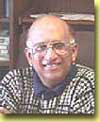|
Hannover Fair 1999 - Meditations
By : Jim Pinto, San Diego, CA. USA
The original versions of this article was published in |

Here I am, at 40,000 feet, somewhere near the North Pole, sitting in a metal cylinder moving at 600 mph, heading back home from Hannover. Rather than numb my mind with a movie, what better opportunity to record objective market musings ........
The Hannover Fair in Germany is probably the largest industrial show in the world - attracting some 300,000 attendees over a full week, including weekends. It follows within a few weeks of the CeBIT computer show in the same city in Northern Germany - seemingly dedicated to these annual events. The exhibitions are housed in some 30 buildings within the Messe, almost a city in itself, with shops, banks, restaurants. They have buses on several routes ferrying the attendees hither and thither - and even a train-station with a fast bullet-train to Frankfurt. If you were not far-thinking enough to have booked a room about a year in advance, you'd have to stay at hotels as far away as 100 km. Apparently, you can also stay with local families, who accommodate visitors - albeit for a fee - during the peak periods.
I suppose one could spend the whole week diligently and tirelessly reviewing the show, though I doubt that anyone does that - because the exhibition includes tractors and locomotives and just about anything "industrial". My own focus is the 3 or 4 buildings which house the "factory automation" companies. Here you get a view of all the major market players - because anyone who is not there is probably not worth knowing. Everyone is there because everyone is there. The booths and walkways are crowded almost all the time, with engineers jostling each other with vigor that is reminiscent of crowds in Hong Kong at the discount electronics shops. I must admit to wondering why I've never seen the names of seemingly large instrumentation companies like SICK and LUST and VD anywhere else - but they are here every year, as large as life in Hannover.
In building 11, right next to the Sud entrance, was Siemens, the king of the hill - at least in Germany. Rockwell, anxious to increase its miniscule market share in Germany with its acquisitions of Sprecher & Schuh and others neatly folded in to boost its apparent size, was right next to Siemens this year. Clustered around the prized arena were Schneider (with its little brood of French PLC companies plus Modicon, all blended in) and ABB (now with Hartmann & Braun and Bailey) and GE-Fanuc (with Total Control already in tow). Weidmuller and Phoenix were there, moving up the food chain from a declining market in connectors to the hopefully burgeoning I/O business and inevitably falling prey to the perception that bigger is better. Sony was not there, but the Sony salesmen had already visited every major exhibitor several months ago - because everyone had large Sony flat-screen monitors to show videos of virtual products to the endless hordes of hypnotized engineers. Siebe and Honeywell and Fisher-Rosemount were not there because somehow in Germany, process control is not really "industrial". Don't ask me why - I don't know....
This year, building 15 housed the "fieldbuses". Profibus (Siemens) and Interbus (Phoenix) had the largest cooperative displays, each one showing that lots of other companies were involved. Of course, one can't help but notice that the very same companies are involved with all the buses, hoping bravely that offering all the buses will make them winners. A marketing guru has said that to make a small fortune with fieldbus you must start with a large fortune - a lot of people seem to be following that advice.
The CAN booth had a fairly large showing, but users are still confused as to why CANopen and SDS and DeviceNet are not interoperable. The largest CAN display was a miniature automobile production line, manned by a GM engineer, showing DeviceNet and ControlNet playing together while a robot played checkers on the same network. Of course, ControlNet has nothing to do with CAN, other than that Allen-Bradley and its ODVA adjunct support both network flavors. LON was there, but with few supporters that have demonstrated business success and with several eager, and perhaps naive, new entries. Motorola was not there because it has now abandoned its LON-chip-support, leaving Toshiba as the lone supplier. From the vantage-point of sheer booth-size and exposure, admittedly a possibly misleading market measurement, the winners were Profibus, Interbus and CAN (DeviceNet) with LON making a poor showing and Ethernet spreading like grass-roots.
Software was around, but merged into the scene, with little evidence of the old, glorious displays of the Software-only companies. Wonderware and Intellution had booths, but the old growth fires were not evident. National Instruments was nearby, showing software orchestrating smoothly with PC hardware and pointing the way to integrated measurement network possibilities.
There were lots and lots of small booths, with a plethora of products - flat-panel PCs and displays, sensors, motors, drives, controls, actuators. You could stop at any one of them to rest your feet, eat their cookies and drink an apfelsaft, provided you are willing to simulate a modicum of interest. By the end of my two-day visit, they were all merging into an amorphous amalgam of commodity products. I must be getting old, because if there was a budding boom out there somewhere, I simply couldn't see it.
The Hannover Messe is always worth the visit, though only as a data-point in the marketing trend-graph, rather than a major event. The key is the renewal of contacts with key people in target European companies - the meeting point for personal networking.

|
Return to Index of all JimPinto Writings

 Return to JimPinto.com HomePage
Return to JimPinto.com HomePage
If you have ideas or suggestions to improve this site, contact: webmaster@jimpinto.com
Copyright 2000 : Jim Pinto, San Diego, CA, USA